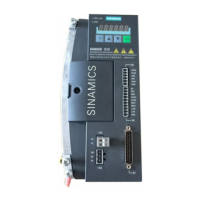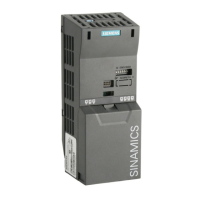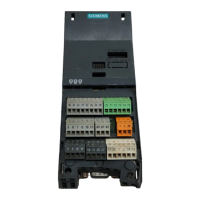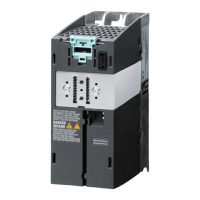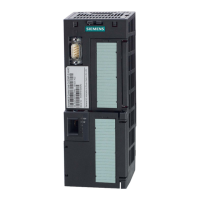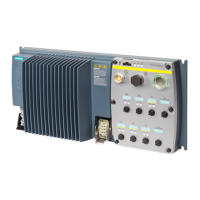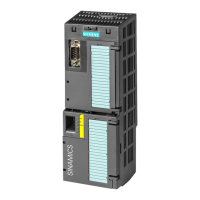DC link components
7.2 Braking Module Booksize
SINAMICS S120 Combi
Manual, 11/2017, 6SL3097-4AV00-0BP7
165
Braking Module Booksize
7.2.1
The Braking Module is used together with an external braking resistor for the following
applications:
● For a power failure, the S120 Combi and expansion axes can be stopped in a controlled
fashion (e.g. emergency retraction or EMERGENCY OFF Category 1).
● For brief generator operation, the DC-link voltage can be limited, e.g. if the energy
recovery function is deactivated or is not adequately dimensioned.
The Braking Module includes the necessary power electronics and control. When the
Braking Module is in operation, the power which is fed back into the DC link is dissipated via
an external braking resistor.
External braking resistors
On the Braking Module, braking resistors can be operated without thermostatic switches
6SN1113-1AA00-0DA0 (P
N
= 0.3 kW) and 6SL3100-1BE31-0AA0 (P
N
= 1.5 kW).
The cable length between the Braking Module and the braking resistor is limited to a
maximum of 10 m.
A shielded connection cable (3 m, 3 x 1.5 mm
2
) is supplied with braking resistor 6SN1113-
1AA00-0DA0.
Furthermore, the Braking Module can used with a braking resistor to quickly discharge the
DC-link capacitors The DC link is discharged in a controlled manner via the braking resistor
once the infeed unit has been switched off and the line-up has been disconnected from the
line supply (e.g. via the main switch or line contactor). The function can be activated via a
digital input on the braking module. A quick discharge makes sense, for example, when
maintenance tasks are to be performed at the S120 Combi and/or motor installation
(reduction of the discharge time).
Electric shock when live parts are touched after a rapid discharge
After rapid discharge or if discharge is interrupted, a hazardous voltage can still remain.
Contact with live parts can result in death or serious injury.
• Check that it really is in a no-voltage condition, from phase conductor to phase
conductor and phase conductor to protective conductor.

